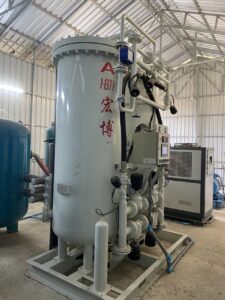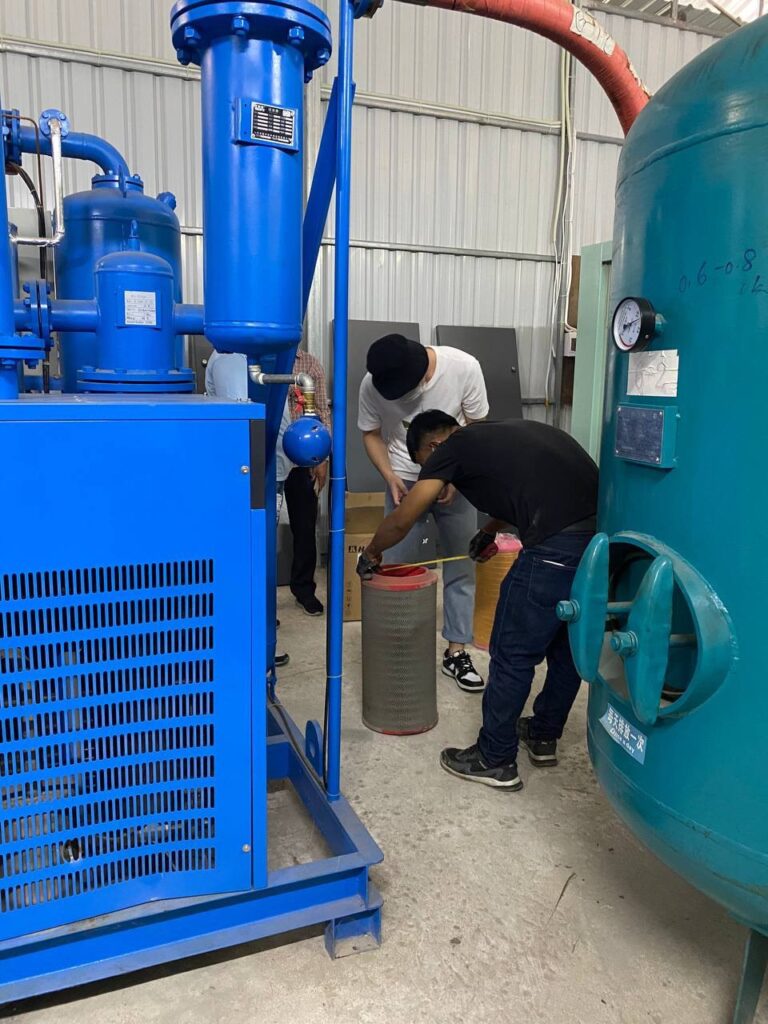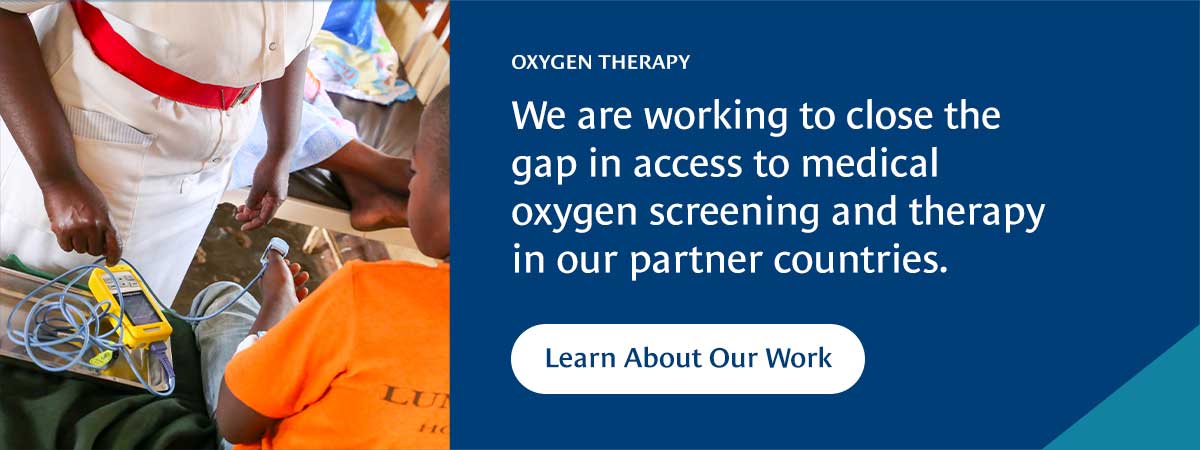Background
Low blood oxygen, or hypoxemia, is a life-threatening complication of respiratory infection, preterm birth, surgery, labor and delivery, childhood illnesses, and many other conditions. Nearly one-quarter of sick newborns and more than one-in-six hospitalized children worldwide do not have access to medical oxygen.
The COVID-19 pandemic demonstrated the critical importance of investing in oxygen access to strengthen health systems. At the height of the pandemic, the Cambodia government quickly took steps to scale up oxygen access throughout the country due to the high number of critical COVID-19 patients needing oxygen. In particular, the government invested heavily in pressure swing adsorption (PSA) plants to supply oxygen directly at hospital sites.
Through Cambodia’s own domestic budget and external funders’ rapid investment, the medical oxygen landscape in Cambodia was transformed: from two PSA plants prior to the pandemic, 40 PSA plants have been installed or are in the process of being installed across all provinces in Cambodia. However, PSA plants are expensive to maintain and to operate, with a monthly operating cost of US$15,000 per plant, which is too costly for most Cambodian hospitals to bear. As a result, many hospitals can’t maintain their new PSA plant to the disadvantage of children, women and elderly who would benefit from expanded oxygen access.
“By contrast, if we can develop a sustainable model to operate and maintain PSA plants, we can protect our investments and ensure functional oxygen production for 15 years – serving a new generation of Cambodians.”
Dr. Virya Koy, Deputy Director of the Department of Hospital Services at Cambodia’s Ministry of Health.
Theory of change
Since November 2022, CHAI has collaborated with the Government of Cambodia to develop a Hub and Spoke model to optimize investments in PSA plants. The model is designed to achieve two primary goals: first, to enhance healthcare outcomes by expanding oxygen accessibility to peripheral healthcare facilities, and second, to ensure financial sustainability for the continued operation and maintenance of the PSA plants.
Approach
In this model, the facility with the installed PSA plant is the “Hub”. The Hub serves as the central site for filling oxygen cylinders used by all public health facilities within the province, which are the “Spokes.” The spokes can procure oxygen cylinders at a lower cost from the hub than from the private sector – a win-win for all stakeholders involved:
- Subnational governments and hospitals that funded the PSA plant witness a more significant health impact extending beyond the immediate installation site, e.g., providing oxygen to the whole province.
- Owners of the PSA plants achieve cost recovery to sustain plant operations and maintenance, allowing them to be used to their full potential,
- Peripheral healthcare facilities (e.g., lower-level hospitals and health centers) without PSA plants can access oxygen at a lower cost than if they purchased cylinders from the private sector; moreover, any surplus oxygen introduced into the private sector can create competitive pressure, resulting in a downward shift in market prices due to increased supply.
Hence, the approach creates a win-win situation, fostering both enhanced healthcare services and financial viability in medical oxygen provision.
Because of the willingness of local authorities to innovate, Kampong Cham Province has been chosen as a flagship location for a demonstration of the Hub-and-Spoke model. The PSA plant in Kampong Cham has a rated capacity of 80 Nm3 per hour, sufficient to cater to the needs of all hospitals and health centers across the province. The model was executed in a phased approach starting from May 2023. The plant currently serves all nine public hospitals operating at the secondary care level with plans to expand to all 91 health centers at the primary care level in the province. Any surplus oxygen generated beyond the public sector’s requirements will be made available for purchase by the private sector.
Results
So far, the hub and spoke implementation has surpassed the original goals. The Kampong Cham PSA plant commenced operations in October 2021, serving two COVID-19 treatment centers in the province, which was its original intended scope. However, operations of the plant ceased in April 2022 as the two COVID-19 treatment centers shut down. The preparatory work for the implementation allowed the nonfunctional PSA plant in Kampong Cham to be restored and functional again by April 2023.
Now the PSA plant has been revitalized, and its benefits have been extended to all public hospitals in the province, going beyond its initial COVID-19 scope. Since May, all nine public hospitals at the secondary care level have been receiving oxygen monthly. Starting from August 2023, 12 health centers and one health post in Prey Chhor operational district also began receiving oxygen, with plans to expand this coverage to the other 79 health centers in all nine operational districts in the province from October onwards.
To ensure sustained operations, the Provincial Hospital and District Referral Hospital implemented a revenue collection system, levying a fee of US$4 and US$6 per cylinder (to account for transport cost), respectively, which is significantly lower than the US$15 charged by private suppliers for oxygen. From May to August, nearly US$13,700 has been collected from this revenue collection system, offsetting the operations and maintenance costs of electricity, manpower, maintenance, and transportation.
“The Hub and spoke model allow the PSA plants to increase oxygen access for other services beyond COVID-19, and crucially, it allows us to sustain the PSA plants operations for the long-term.”
H.E. Dr. Kimsour Phirun, Provincial Health Department Director of Kampong Cham.
Next steps
In partnership with the government and the Kampong Cham Province, CHAI is currently collating lessons learned from the implementation of the project to inform the planning and scale up of the model nationwide. By demonstrating the effectiveness of this approach in making full use of the new investments from the COVID-19 response, the country can better respond to routine demand for oxygen and is now prepared to address future health shocks.








